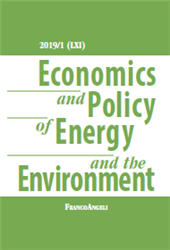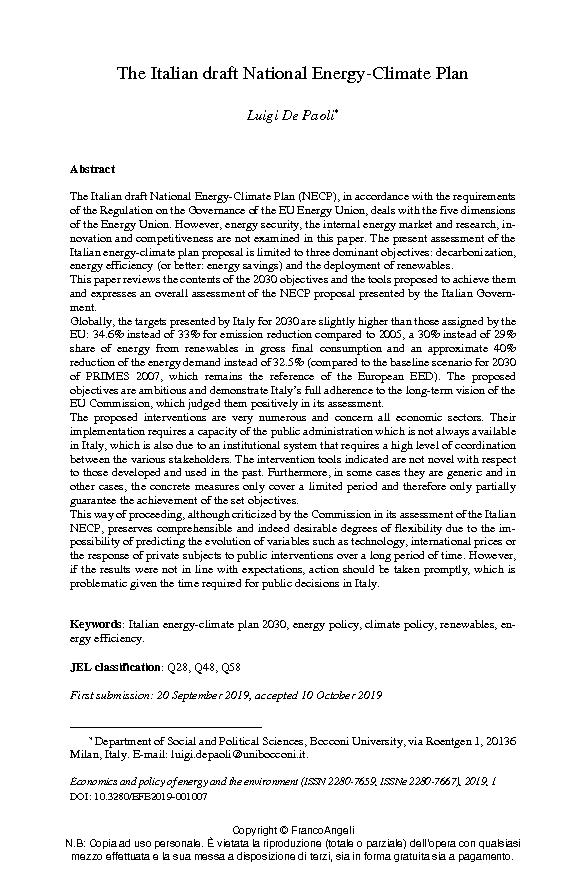The Italian draft National Energy-Climate Plan
97-118 p.
The Italian draft National Energy-Climate Plan (NECP), in accordance with the requirements of the Regulation on the Governance of the EU Energy Union, deals with the five dimensions of the Energy Union. However, energy security, the internal energy market and research, innovation and competitiveness are not examined in this paper. The present assessment of the Italian energy-climate plan proposal is limited to three dominant objectives: decarbonization, energy efficiency (or better: energy savings) and the deployment of renewables. This paper reviews the contents of the 2030 objectives and the tools proposed to achieve them and expresses an overall assessment of the NECP proposal presented by the Italian Government. Globally, the targets presented by Italy for 2030 are slightly higher than those assigned by the EU: 34.6% instead of 33% for emission reduction compared to 2005, a 30% instead of 29% share of energy from renewables in gross final consumption and an approximate 40% reduction of the energy demand
instead of 32.5% (compared to the baseline scenario for 2030 of PRIMES 2007, which remains the reference of the European EED). The proposed objectives are ambitious and demonstrate Italy's full adherence to the long-term vision of the EU Commission, which judged them positively in its assessment. The proposed interventions are very numerous and concern all economic sectors. Their implementation requires a capacity of the public administration which is not always available in Italy, which is also due to an institutional system that requires a high level of coordination between the various stakeholders. The intervention tools indicated are not novel with respect to those developed and used in the past. Furthermore, in some cases they are generic and in other cases, the concrete measures only cover a limited period and therefore only partially guarantee the achievement of the set objectives. This way of proceeding, although criticized by the Commission in its assessment of the Italian NECP,
preserves comprehensible and indeed desirable degrees of flexibility due to the impossibility of predicting the evolution of variables such as technology, international prices or the response of private subjects to public interventions over a long period of time. However, if the results were not in line with expectations, action should be taken promptly, which is problematic given the time required for public decisions in Italy. [Publisher's text].
-
Artikel aus derselben Ausgabe (einzeln erhältlich)
-
Informationen
ISSN: 2280-7667
KEYWORDS
- Italian energy-climate plan 2030, energy policy, climate policy, renewables, energy efficiency



